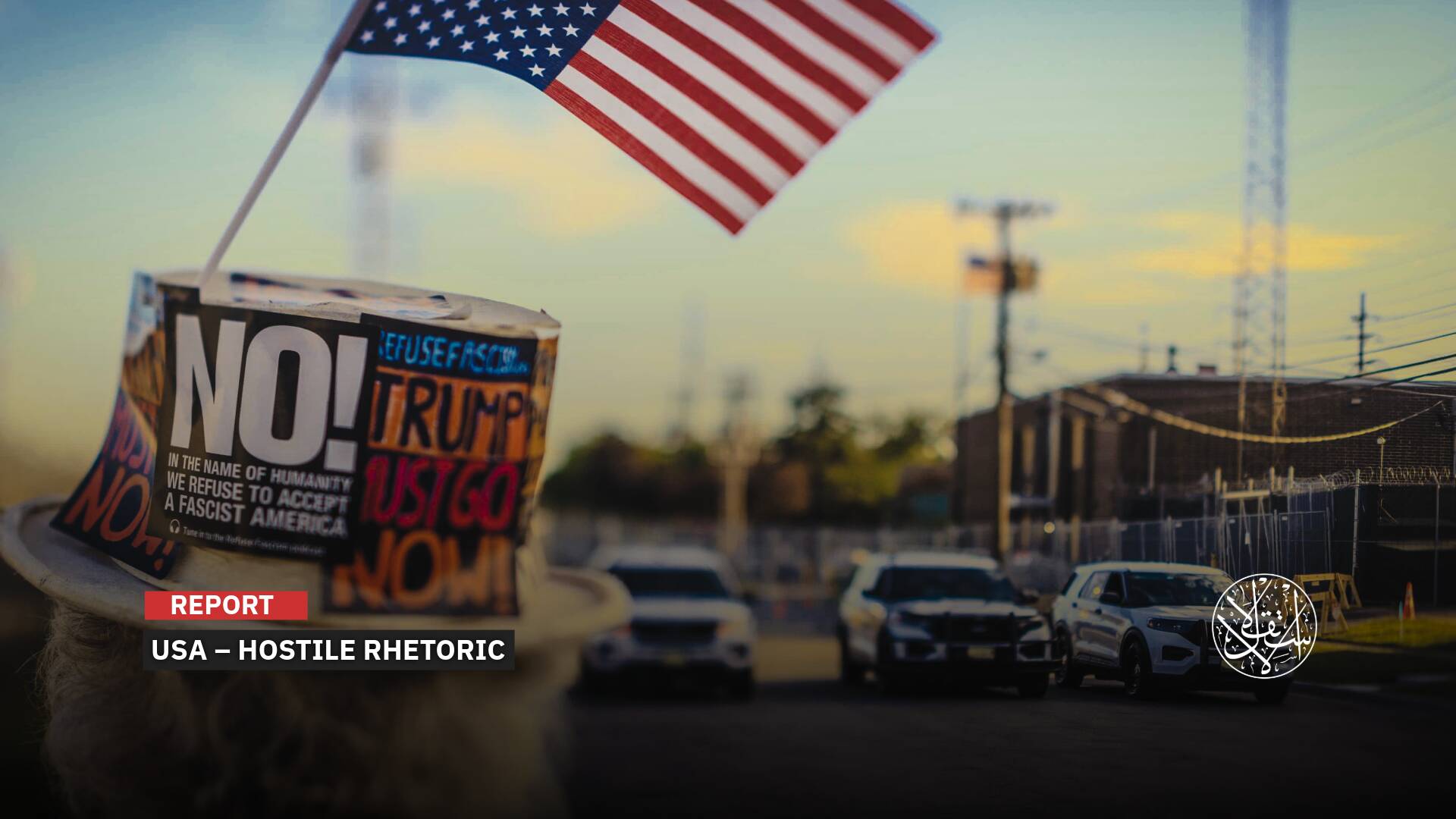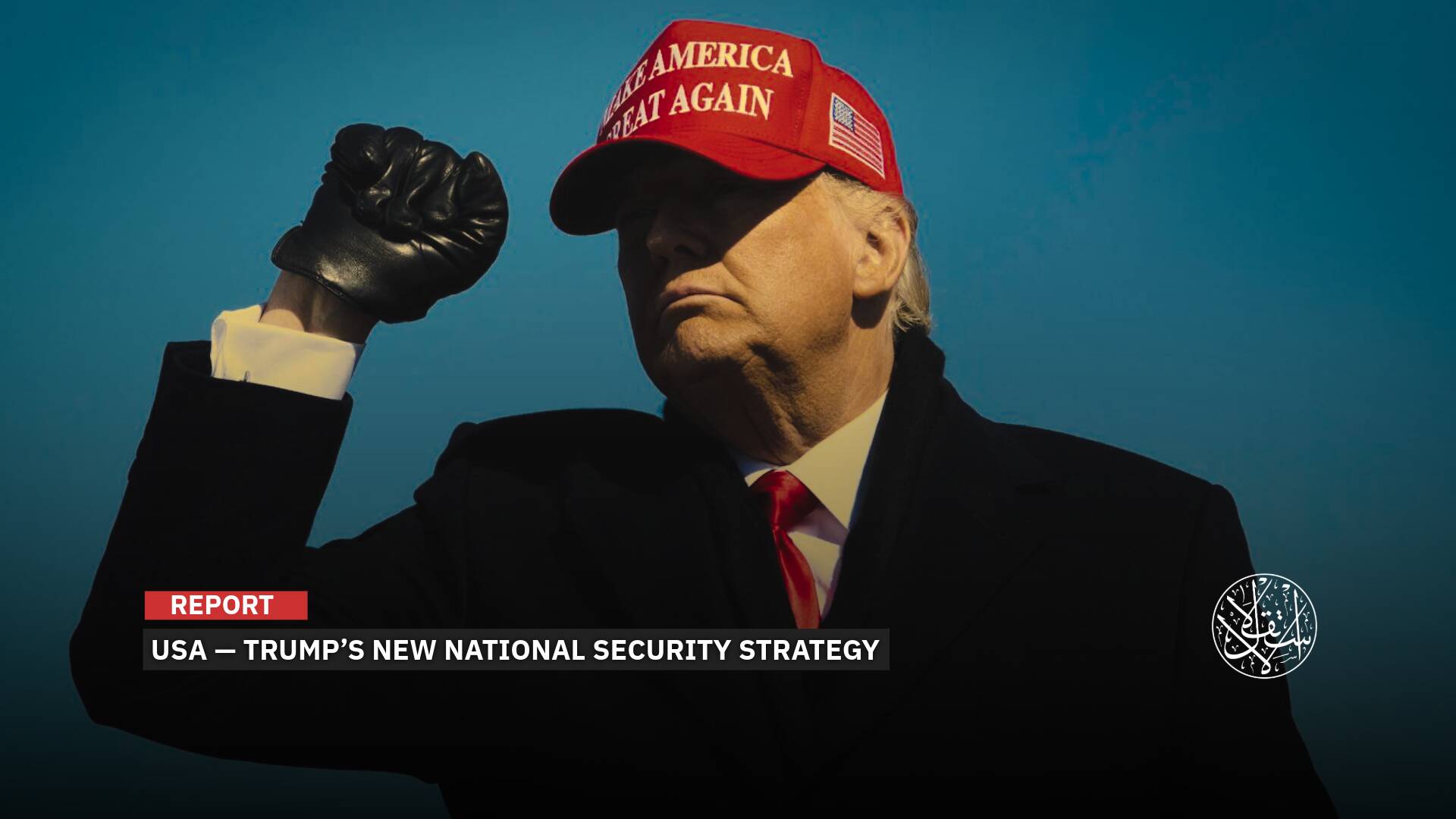Unprecedented Protests: What’s Next After Americans Reject Trump’s Economic Policies?

The sudden and intense scale of the protests was striking, contrary to Trump's wishes.
The recent wave of protests in the United States reflects a growing public anger over the economic policies of Donald Trump's administration, particularly cuts to government services and support programs.
This surge in discontent raises questions about the potential for its expansion, especially as the White House continues to resist responding to the demands of the protesters.
On April 5, 2025, over 1,400 demonstrations were held across 50 states, with more than 600,000 people participating, according to CNN.
This has sparked questions about the significance and timing of the protests against Trump, and whether they can be considered an "American Spring," given their blend of economic and political demands.
The demonstrations expressed outrage over Trump's policies and the role of billionaire Elon Musk, who oversees the Department of Government Efficiency.
Protesters decried the economic hardships that followed, including rising prices, mass layoffs of federal employees, and the growing influence of Trump’s supporters over key state institutions.
The protests have been described as the first major public outcry against Trump, carried under the banner "Hands Off," a direct call for the president and his administration officials to cease harming the American public.
Demonstrators also demanded the removal of the wealthy figures within the administration, including Elon Musk, who were portrayed in the protests as akin to Nazis.
The protests also took on a distinctly political tone, with the slogan Hands Off Democracy echoing claims that the administration was attempting to seize power.
These were not merely economic protests but a fusion of political and economic discontent, with demonstrators holding signs reading: "Not My President," "We Reject Economic Tyranny," and "Fascism is Here."
Protesters spoke of a "constitutional crisis," labeling Trump as a "lunatic" and accused him of governing America through "executive orders" with the weight of the Constitution behind them—orders that, they argued, had upended the lives of ordinary Americans.
Why Now?
Before the protests erupted, the Trump administration had suggested that all was well, portraying the American public as largely satisfied with his leadership and the decisions he claimed would improve the nation's economic standing.
Therefore, the sudden and large-scale outpouring of demonstrations came as a striking contrast to the hopes of the hard-right Republican president, marking a dramatic shift in the public's mood.
The unified slogan of the protests was "Hands Off," or "Stay Away From Us," timed to coincide with a series of economic decisions deemed haphazard, which had a detrimental impact on the lives of Americans.
Organizers set out several key demands: an end to the takeover by billionaires and the rampant corruption within Trump’s administration, as well as what they described as Elon Musk's growing influence over government power, the slashing of the federal budget, and the mass layoffs of public sector workers.
Protesters criticized the cuts to federal funding for healthcare, Social Security, and other essential programs that millions of workers rely on.
They also objected to the reduction in the federal workforce and demanded an end to the attacks on immigrants, Black communities, and other marginalized groups by the administration's far-right extremists and the populist evangelical movement led by Trump.
The protests were dominated by slogans expressing anger at Trump’s economic team, such as "Eat the Rich," "Take Them Down," and "Musk Must Go," in reference to the billionaire’s actions—laying off employees and cutting budgets for numerous federal agencies.
Anti-wealthy slogans also filled the streets, targeting those who dominate the U.S. administration, particularly Trump and Musk, along with his Republican administration officials.
There were also political demands driven by a series of successive presidential orders. Among the slogans raised during the protests were, "Resist like it’s 1938 Nazi Germany" and "Fascism is alive and well and living in the White House," according to The Guardian, April 5, 2025.

Americans affected by Trump’s policies have voiced their concerns over the shifting direction of U.S. governance and the president’s consolidation of power (he has suggested he is considering amending the Constitution to secure a third term), according to U.S. newspapers.
The unifying issue for the protests was the growing discontent over what the organization Indivisible described as "the most brazen power grab in modern history," led by Trump, his advisor Elon Musk, and their billionaire allies.
"Whether you are mobilized by the attacks on our democracy, the slashing of jobs, the invasion of privacy, or the assault on our services – this moment is for you,” the event flyers state. “We are setting out to build a massive, visible, national rejection of this crisis," as highlighted by one of the campaign's posts.
Mass Protests
As the first mass protests against Trump to occur on such a large scale across cities nationwide, political analysts in both American and European newspapers have questioned their significance and potential consequences for his administration.
Could they lead to even larger, more violent demonstrations?
Will these protests snowball, gaining momentum and turning the tide against Trump, or will they remain within the realm of routine protests?
The protests were primarily led by a coalition of dozens of left-leaning groups, such as MoveOn and Women's March.
These politically charged organizations are strongly opposed to Trump's "Make America Great Again" movement, which, while championing far-right ideologies, marginalizes other liberal political currents in favor of the extreme right.
According to the organizers, the purpose of the protests was to shine a light on what they described as Trump’s "authoritarian style of governance," including decisions such as firing federal employees and dismantling the Department of Education.
Congressional representatives also joined the demonstrations, including Maxwell Frost, the representative from Florida, who labeled Trump and Musk’s actions as "a billionaire takeover" of the government.
"When you steal from the people, expect the people to rise up. At the ballot box and in the streets," he shouted.
The organizers of the Boston march summed up their goal, stating, "The federal administration thinks this country belongs to them -- and that they're above the law," organizers of the Boston rally said. "They're taking everything they can get their hands on -- our rights, our health care, our data, our jobs, our services -- and daring the world to stop them," according to ABC News, April 5, 2025.
The protests reflected a growing unease among Americans regarding the future of social programs and the increasing influence of the wealthy in government decision-making.
As a result, the demonstrations attracted a broad cross-section of society, including the poor, Black communities, the marginalized, and immigrants.

Among the sponsors of the "Stay Away From Us" protests were the American Federation of Labor, the Industrial Organizations Conference, Americans for Financial Reform, and the Common Cause organization.
Also backing the demonstrations were the Consumer Federation of America, Indivisible, Planned Parenthood, and around 150 activist groups, according to U.S. News, April 6, 2025.
The organizers expressed their hope that the protests would help halt Trump’s policies, which they argue threaten democracy and social justice.
Ezra Levin, co-founder of the Indivisible organization—one of the groups behind the protests—stated, "This is an enormous demonstration that is sending a very clear message to Musk and Trump and congressional Republicans and all the goose-stepping allies of MAGA that we don't want their hands on our democracy, on our communities, on our schools, and our friends and our neighbors."
U.S. estimates suggest that what fueled these protests was the growing concern among anti-Trump forces that he may have succeeded in pushing his agenda, aided by insufficient resistance from congressional Democrats and the absence of large-scale popular opposition that had emerged during the early days of his first term.
It was also noted that the protests were fueled by Trump and Musk’s loss in the competitive race for the Wisconsin Supreme Court election.
Musk spent $25 million of his personal wealth to support the Republican candidate, with Trump’s endorsement behind him, only to see the Democratic contender emerge victorious.
Economic Unrest
In contrast, U.S. reports suggest that the domestic protests against Trump, driven by economic factors, are unlikely to escalate into an "American Spring" or directly impact the completion of his presidency. However, they are expected to evolve into a web that constrains him, imposing limits on his future decisions.
Analysts argue that the U.S. economic crisis is not solely the result of Trump’s declaration of a global trade war, but is fundamentally rooted in the mounting national debt, which has reached $36 trillion.
Khalil al-Anani, a professor at a Washington university, explains that the protests against Trump are not just tied to tariffs and recent economic decisions, but also to America’s ongoing crisis—the enormous size of its debt.
Analysts argue that the U.S. economic crisis is not solely the result of Trump’s declaration of a global trade war, but is fundamentally rooted in the mounting national debt, which has reached $36 trillion.
Al-Anani explains that the protests against Trump are not just tied to tariffs and recent economic decisions, but also to America’s ongoing crisis—the enormous size of its debt.

The U.S. domestic national debt stands at $36 trillion, approximately 122% of GDP, while the external debt amounts to $8 trillion.
Additionally, the U.S. faces a domestic trade deficit of $1.5 trillion (expenditures versus revenue), alongside an external trade deficit of around $1 trillion (exports versus imports).
Despite opposition to his blanket tariffs and growing discontent among many Americans, the White House dismissed the protests, with the Republican president offering no indication of backtracking, stating, "My policies will never change."
Trump's approval rating has dropped to its lowest level since taking office, as he continues to implement aggressive changes both in Washington and beyond, according to recent opinion polls.
Numerous lawsuits have constrained much of Trump's agenda, with court rulings halting many of his executive orders after he was accused of overstepping his authority through attempts to dismiss government employees, deport immigrants, and undermine democracy.
A poll conducted by Reuters/Ipsos in early April revealed that the president's approval rating had dropped to 43%, its lowest point since the beginning of his second term in January, when it stood at 47% at his inauguration.
The same poll revealed that 37% of Americans approve of his handling of the economic situation, while only 30% expressed support for his strategy in addressing the cost of living in the United States.
Another poll conducted by the Harvard CAPS/Harris organization indicated that 49% of registered voters approve of Trump’s performance in office, down from 52% in March 2025.
As a result, the organizers of the protests hope that demonstrations across the country will influence lawmakers in Congress on issues such as voting rights, social services, and economic policy.
Sources
- Angry protesters from New York to Alaska assail Trump and Musk in ‘Hands Off!’ rallies
- ‘Hands Off!’ protesters across US rally against President Donald Trump and Elon Musk
- Tens of thousands rally against Trump at DC ‘Hands Off’ protest
- Huge crowds gather in 'Hands Off' rallies nationwide in protest of Trump administration
- Thousands gather at Ohio Statehouse as part of ‘Hands Off’ protests against Trump and Musk











